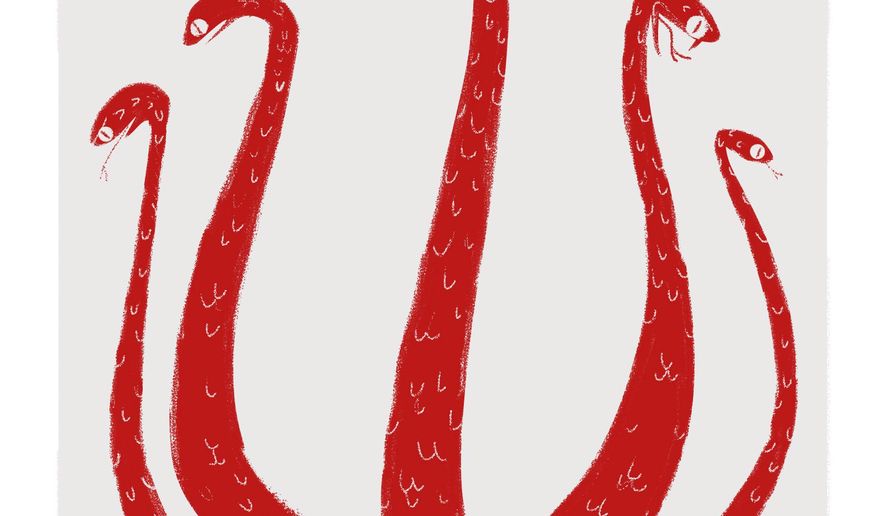OPINION:
Iran is on the march in the Middle East.
Over the past year, a steady drumbeat of news reports from the Persian Gulf, intelligence assessments regarding Syria’s civil war, and firsthand accounts out of Iraq, Lebanon and beyond has pointed to an inescapable conclusion: Iran is erecting a new empire in the region.
In truth, this effort has been underway for some time. Already three years ago, the contours of Iran’s regional ambitions were coming into focus. With the seizure of Yemen’s capital, Sana’a, by the country’s Iranian-supported Houthi rebels in the fall of 2014, the Islamic Republic of Iran could effectively claim control of four Arab regional capitals (including Beirut, Damascus and Baghdad).
Since then, Tehran’s grip on those territories has only tightened. In Syria, Iran’s strategic footprint has expanded steadily, to the point at which Tehran is now reportedly planning a permanent military presence in the country as part of its partnership with the regime of Bashar Assad. In Lebanon, working via its chief terrorist proxy, Hezbollah, the Islamic republic has become so dominant in national politics that it prompted Saudi Arabia to force the resignation of the country’s prime minister, Saad Hariri, earlier this month. Meanwhile in Iraq, Iran’s support for the hashd al-shaabi, the powerful Shiite militias that now dominate the country’s Ministry of Interior, has made it a key stakeholder in (and the most likely winner of) the country’s national elections next year. And in Yemen, the expanding power of the Houthis, and the threat that they pose to neighboring Saudi Arabia as well as to American forces in the Gulf, has had everything to do with growing political and military support from Tehran.
Nevertheless, the pace of Iran’s imperial project is now accelerating in at least two ways.
First, mounting evidence from the Syrian theater indicates that Iran has succeeded in deploying a formidable expeditionary force of fighters there. Historically, Iran’s clerical army, the Islamic Revolutionary Guard Corps, has served as the regime’s dedicated foreign legion. But the Syrian civil war has provided Iranian officials with an opportunity to marshal a supplemental cadre of irregular fighters and “volunteers,” drawn from Iraq’s Shiite militias as well as places like Pakistan, Afghanistan and Yemen. The result is a secondary Iranian proxy force that, according to some estimates, could number as many as 200,000 men under arms, and which can be deployed by Tehran to other theaters in the future, once the war in Syria dies down.
Second, Iran has succeeded in establishing resupply routes to funnel both personnel and materiel to the Levant. As Michael Pregent of the Hudson Institute has mapped out, Iran’s growing control over Iraq via the hashd al-shaabi has created a land corridor that provides a direct transport link into Syria for Iranian forces and arms. This has been supplemented by an “air bridge” of flights spearheaded by Iran’s national air carrier, Iran Air, which has helped to ferry both guerrillas and Guardsmen to the Syrian front. The end result is a zone of Iranian control stretching from territorial Iran all the way to the Eastern Mediterranean.
What has made all this possible? A large portion of the blame rests with the 2015 nuclear deal concluded between Iran and the P5+1 powers. That agreement proffered enormous economic benefits to the Islamic Republic in hopes that, over time, it would lead to a moderation of the Iranian regime. Instead, the opposite has happened. The extensive sanctions relief built into the deal has provided Iran’s ailing economy a much-needed fiscal shot in the arm, and freed up funds that Iran has poured into its proxy forces and its military modernization efforts.
The United States does not yet have an answer to Iran’s growing imperial impulse. In his Oct. 13 speech, President Trump promised a new, “comprehensive” strategy to curtail the contemporary threat posed by the Islamic republic. But such an approach is not yet in evidence. To the contrary, recent U.S. efforts in the Middle East have actually helped to fuel Tehran’s adventurism.
Today, policymakers in Washington remain preoccupied with degrading and defeating the Islamic State terrorist group in Iraq and Syria. As a result, they have paid scant attention to how other regional actors might be empowered by our counterterrorism fight. And they have spent even less time figuring out what, precisely, we can do to prevent the Islamic State’s decline from becoming a boon for Tehran, both in Syria and in the broader region.
The formidable strategic gains made to date by Iran, and the growing imperial appetite of its rulers, suggest that they should.
• Ilan Berman is senior vice president of the American Foreign Policy Council in Washington, D.C.




Please read our comment policy before commenting.